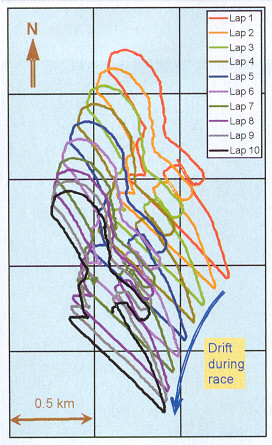Pete suggested to me in a previous thread that next time I measure a course I should use my GPS to measure it as well, to see how accurate it is. I had planned to do that, but then it occurred to me that I didn't need to do be measuring a course to do this. I can do this any time. In fact, it's the world's easiest test to do.
All you have to do is ride a cal course a couple times and then go for a ride, any ride. When you're finished, note the distance reported by your GPS, and then go figure out the distance given by your Jones counter. You don't need to ride a course of known distance, or pay attention to the SPR, or be careful about anything for that matter. Like I said, this is the world's easiest test to conduct.
I would encourage everyone who has a GPS to do this a few times and report their results here. I know that Gene reported some results here, and others have talked about using their GPS for various things, so let's get busy generating data.


